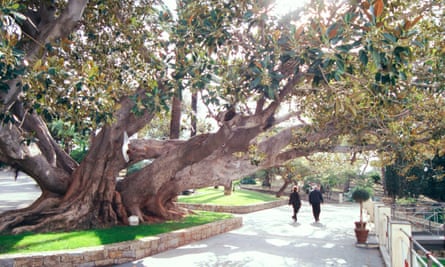Excerpt… set off in search of the largest Ficus macrophylla in western Europe. The tree, commonly known as the strangler fig, was planted in 1886 by Clarence Bicknell, British botanist, collector, lover of Esperanto and chaplain of Bordighera’s Anglican church.Bicknell loved the hilly, pine-covered coast between Sanremo and the French Riviera, but ended up loathing his “tea-party, gossipy” British congregation, who had “no international spirit”. He abandoned the church and spent his time painting flowers, cataloguing archaeological artefacts and taking rubbings of the prehistoric rock carvings in the maritime Alps.
Everything he did is now in the town’s Museo Bicknell, including his vast collection of butterflies, his sketch books, thousands of pressed flowers, a microscope and sepiolite clay pipe. The museum also gives visitors a glimpse of Bordighera in the 1880s, which at the time had a British population of more than 3,000, far outnumbering local people. They founded Italy’s first lawn tennis club in the resort and created exotic gardens around their extravagant villas. The museum’s facade is covered in a clenching, twisting wisteria which overwhelms the building with drooping, purple flowers in spring … There, crushing its entrance gate, is the 21-metre-high strangler fig, with aerial roots twisting down from its branches and a dainty palm tree growing up from between its buttress roots. There’s another monstrous-looking ficus in the garden beyond, where pines, oleander, lemons and aloe burst through the surrounding fences.
Read more…

